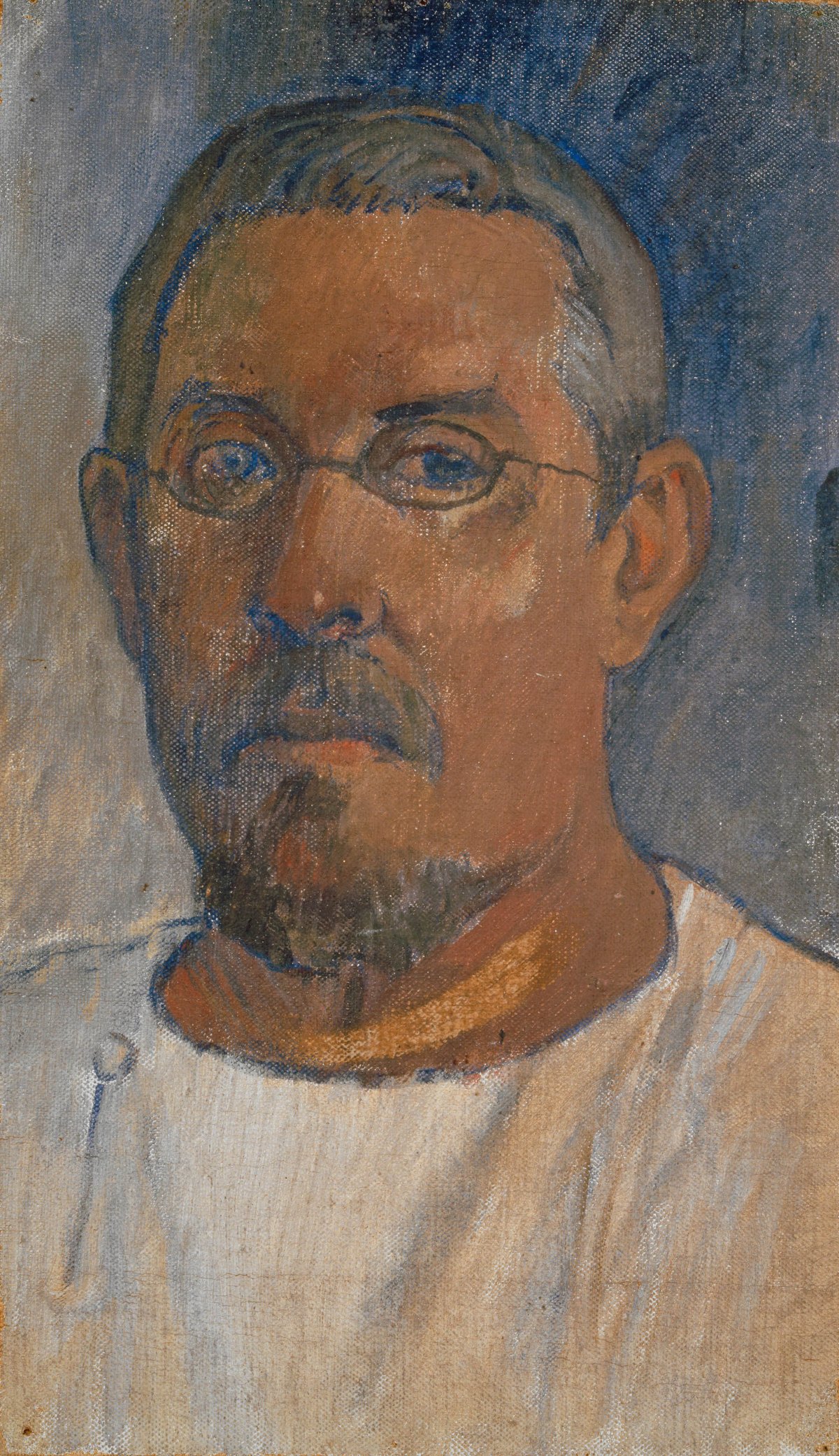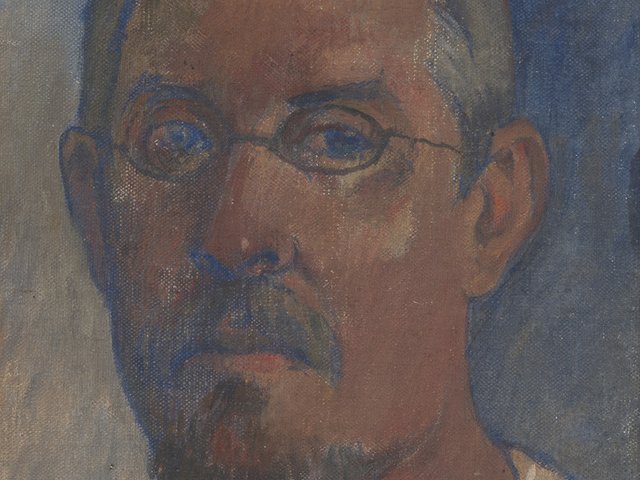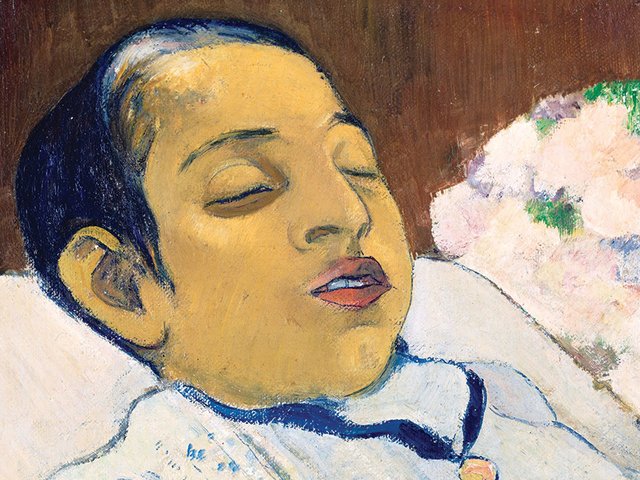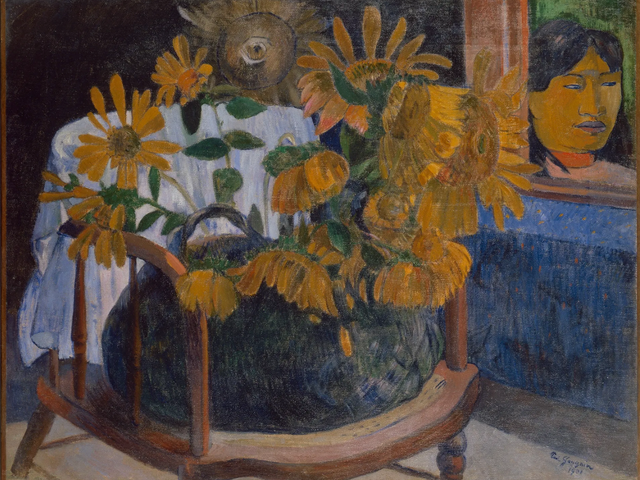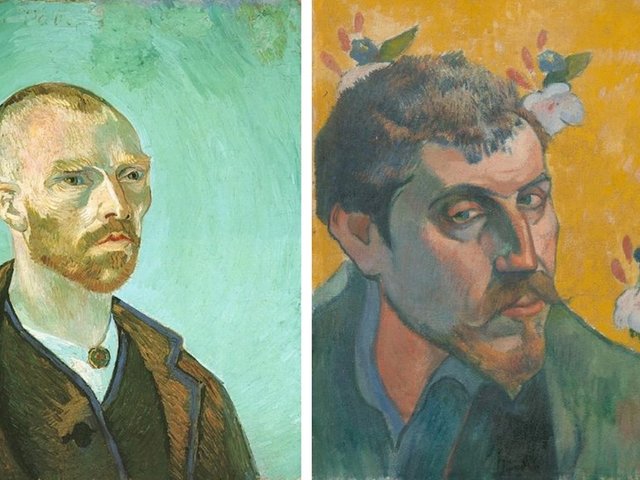Gauguin’s final “self-portrait” is a fake, according to Fabrice Fourmanoir, a French researcher who lived for many years in French Polynesia. Following his investigation, the Kunstmuseum Basel has sent the painting for examination in its conservation studio. The technical results are expected by July.
A Kunstmuseum spokesperson told The Art Newspaper that it is taking the attribution claim “very seriously”. The museum's Self-portrait was bequeathed to the museum in 1945.
The Basel painting is particularly significant, since it has determined how we perceive Gauguin in his final year. Gone is the brash and confident face of his earlier self-portraits; wearing glasses, to deal with his deteriorating sight, he appears elderly, weak and vulnerable. He wears what appears to be a white gown, held with a pin.
Until now, the authenticity of the unsigned painting has been almost universally accepted and dated to 1903. The specialist Sylvie Crussard included it in the Wildenstein Plattner Institute’s Gauguin catalogue raisonné.
The picture has been exhibited in key Gauguin exhibitions in recent years: at Tate Modern, London (2010); the Fondation Beyeler, Basel (2015); the National Gallery of Canada, Ottawa/National Gallery, London (2019); and the National Gallery of Australia, Canberra/Museum of Fine Arts, Houston (2024). In the Canberra/Houston catalogue Henri Loyrette, a former director of the Musée d’Orsay in Paris, describes it as a “portrait of eternity”, comparing it to the Fayum mummy portraits of ancient Egypt.
Fourmanoir, a Gauguin researcher who now lives in Mexico, takes a very different view. He dates the work to 1916, 13 years after Gauguin’s death, and believes it was painted by Ky-Dong Nguyen Van Cam (1875-1929), a Vietnamese friend of the French artist on the Marquesan island of Hiva Oa.
The French authorities had exiled Ky-Dong to the remote Pacific island because of his anti-colonial activities in Indochina. Gauguin apparently taught Ky-Dong to paint, and Fourmanoir says that the portrait was later done from a black-and-white photograph.
What is the evidence? Fourmanoir knew Ky-Dong’s son Pierre Napoleon in the Tahitian capital of Papeete in 1984-90: “We had long conversations about Gauguin and his father, Ky-Dong. He told me his father had said that he had painted the portrait of Gauguin.”
In the Basel picture, Gauguin has light-blue eyes, whereas his 1868 naval record records the colour as “brun” (brown). In most of the dozen or so accepted painted self-portraits, his eyes appear olive brown. The Basel work also lacks the hook (or aquiline) nose Gauguin has in photographs and other self-portraits.
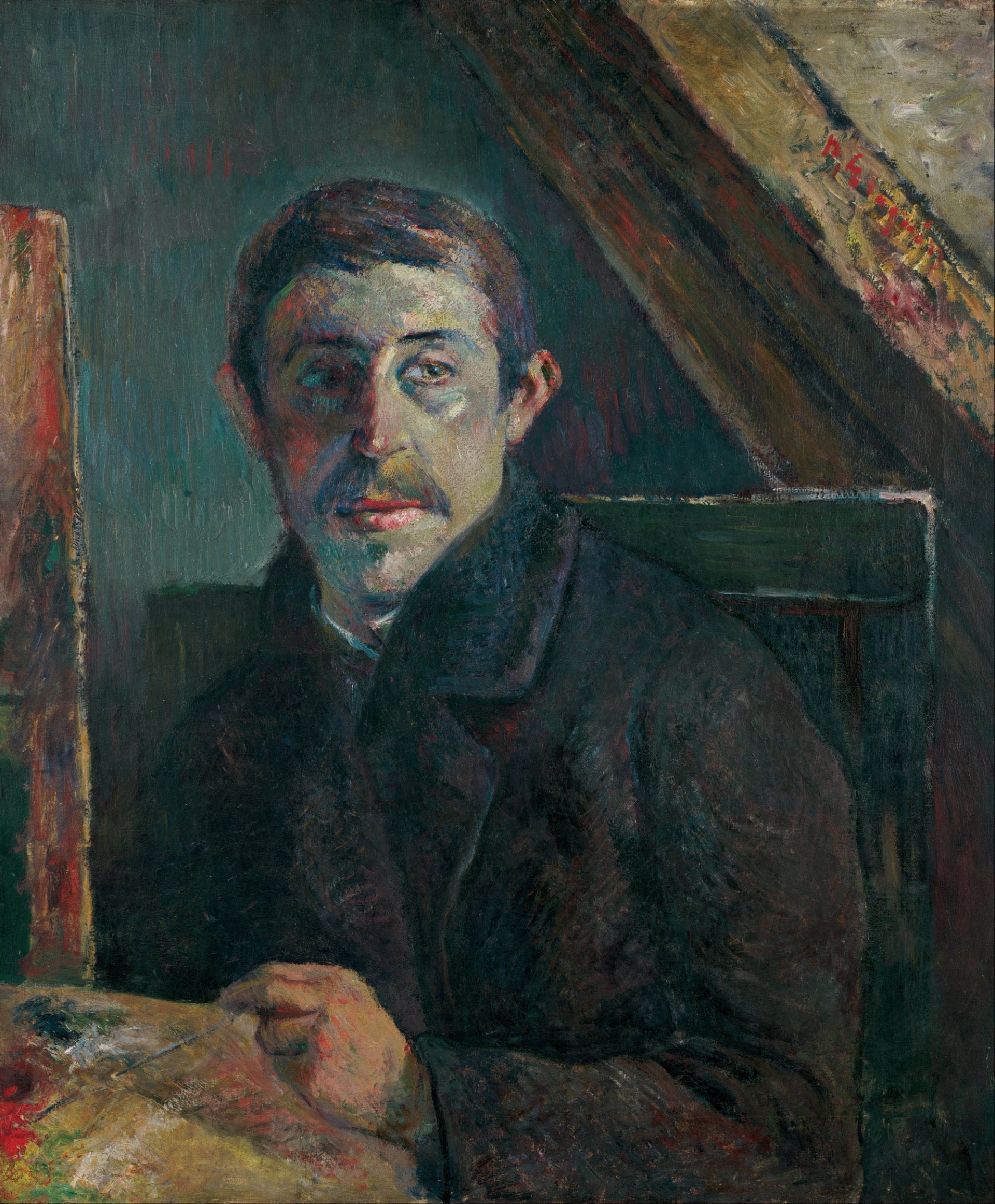
In Gauguin's self-portrait of 1885, his eyes are olive brown, unlike the work that may be by Ky-Dong Nguyen Van Cam Kimbell Art Museum
It is questionable whether Gauguin was well enough in 1903 to have painted a self-portrait. In February that year, he had written to his friend Georges-Daniel de Monfreid saying that he had “hardly touched a brush for three months”. Three months later Gauguin was dead, after an apparent heart attack.
The earliest documented record of the Basel painting is in 1923, when it was owned by Louis Grélet, a Swiss liquor merchant and photographer who had known Gauguin in the Marquesas. He had written a note on the panel of the reverse. In translation it reads: “It was given to me in Atuona [on Hiva Oa] in 1905 by the Annamite [Vietnamese] protestor Ky-Dong who received it from the master himself.” A year later, it came up at a Sotheby’s sale in London.
After the Sotheby’s 1924 sale, the painting was owned by Louis Francis Ormond, the brother-in-law of the artist John Singer Sargent. Four years later, it was bought by the Basel collector Karl Hoffmann, who bequeathed it to the Kunstmuseum.
In summary, Fourmanoir believes that the Basel painting was “made by Ky-Dong and then sold by Grélet as authentic, although Grélet was well aware that it had not been done by Gauguin".
One possibility is that the Basel picture is a joint work by Gauguin and Ky-Dong. The Swedish anthropologist and Gauguin specialist Bengt Danielsson recorded in the 1960s that Grélet had told him that Ky-Dong was once in Gauguin’s studio and “began to paint” his friend’s portrait: “Without a word, Gauguin picked up a mirror and, thrusting his friend aside, took the brush and finished the portrait himself.” Grélet wrote a letter to the Kunstmuseum Basel in 1963 (two years before his death) making a similar suggestion.
Until now, art historians have doubted whether two hands were involved, but this is one of the questions that will need to be considered by the Basel conservators. The painting is expected to be examined using x-radiography, infrared reflectography and ultraviolet fluorescence.


